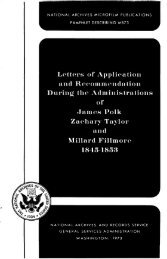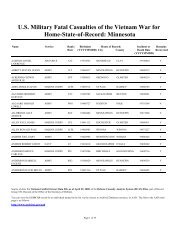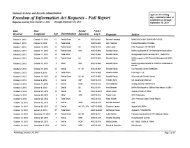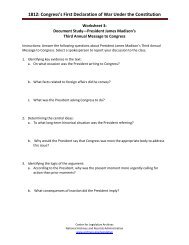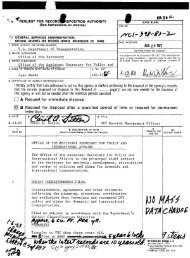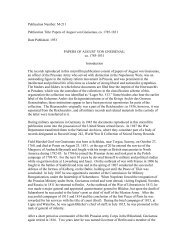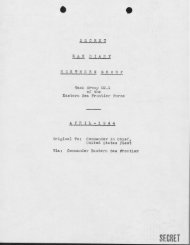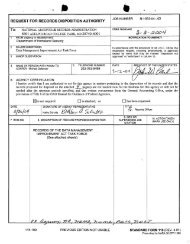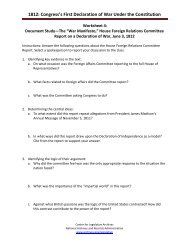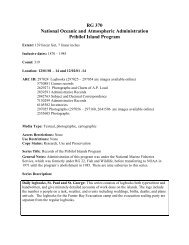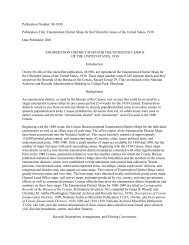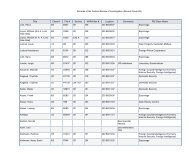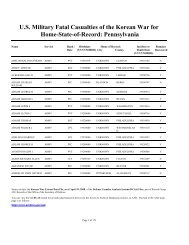HITLER'S SHADOW - National Archives and Records Administration
HITLER'S SHADOW - National Archives and Records Administration
HITLER'S SHADOW - National Archives and Records Administration
Create successful ePaper yourself
Turn your PDF publications into a flip-book with our unique Google optimized e-Paper software.
Ukrainian writers <strong>and</strong> poets. One CIA analyst judged that, “some form<br />
of nationalist feeling continues to exist [in the Ukraine] <strong>and</strong> … there is an<br />
obligation to support it as a cold war weapon.” The distribution of literature in<br />
the Soviet Ukraine continued to the end of the Cold War. 104<br />
Prolog also garnered intelligence after Soviet travel restrictions eased<br />
somewhat in the late 1950s. It supported the travel of émigré Ukrainian<br />
students <strong>and</strong> scholars to academic conferences, international youth festivals,<br />
musical <strong>and</strong> dance performances, the Rome Olympics <strong>and</strong> the like, where<br />
they could speak with residents of the Soviet Ukraine in order to learn<br />
about living conditions there as well as the mood of Ukrainians toward the<br />
Soviet regime. Prolog’s leaders <strong>and</strong> agents debriefed travelers on their return<br />
<strong>and</strong> shared information with the CIA. In 1966 alone Prolog personnel had<br />
contacts with 227 Soviet citizens. Beginning in 1960 Prolog also employed<br />
a CIA-trained Ukrainian spotter named Anatol Kaminsky. He created a<br />
net of informants in Europe <strong>and</strong> the United States made up of Ukrainian<br />
émigrés <strong>and</strong> other Europeans travelling to Ukraine who spoke with Soviet<br />
Ukrainians in the USSR or with Soviet Ukrainians travelling in the West. By<br />
1966 Kaminsiky was Prolog’s chief operations officer, while Lebed provided<br />
overall management.<br />
In this guise, AERODYNAMIC was one of the most effective CIA<br />
operations in approaching disaffected Soviet citizens. In the 1960s Prolog’s<br />
leaders provided reports on Ukrainian politics, dissident Ukrainian poets,<br />
individuals connected with the KGB as well as identities of KGB officers,<br />
Soviet missiles <strong>and</strong> aircraft in western Ukraine, <strong>and</strong> a host of other topics.<br />
Official Soviet attacks on the ZP/UHVR as B<strong>and</strong>erists, German collaborators,<br />
American agents, <strong>and</strong> the like were evidence of Prolog’s effectiveness, as were<br />
Soviet crackdowns on Ukrainian writers <strong>and</strong> other dissidents in the mid to late<br />
1960s. By that time Prolog influenced a new Ukrainian generation. By 1969<br />
Ukrainians traveling from the USSR were instructed by dissidents there to take<br />
informational materials on Soviet repression in Ukraine only to ZP/UHVR<br />
personnel. Travelers to Ukraine even reported seeing ZP/UHVR literature in<br />
private homes. Prolog had become in the words of one senior CIA official,<br />
the sole “vehicle for CIA’s operations directed at the Ukrainian Soviet Socialist<br />
Republic <strong>and</strong> [its] forty million Ukrainian citizens.” 105<br />
Collaborators | 89



